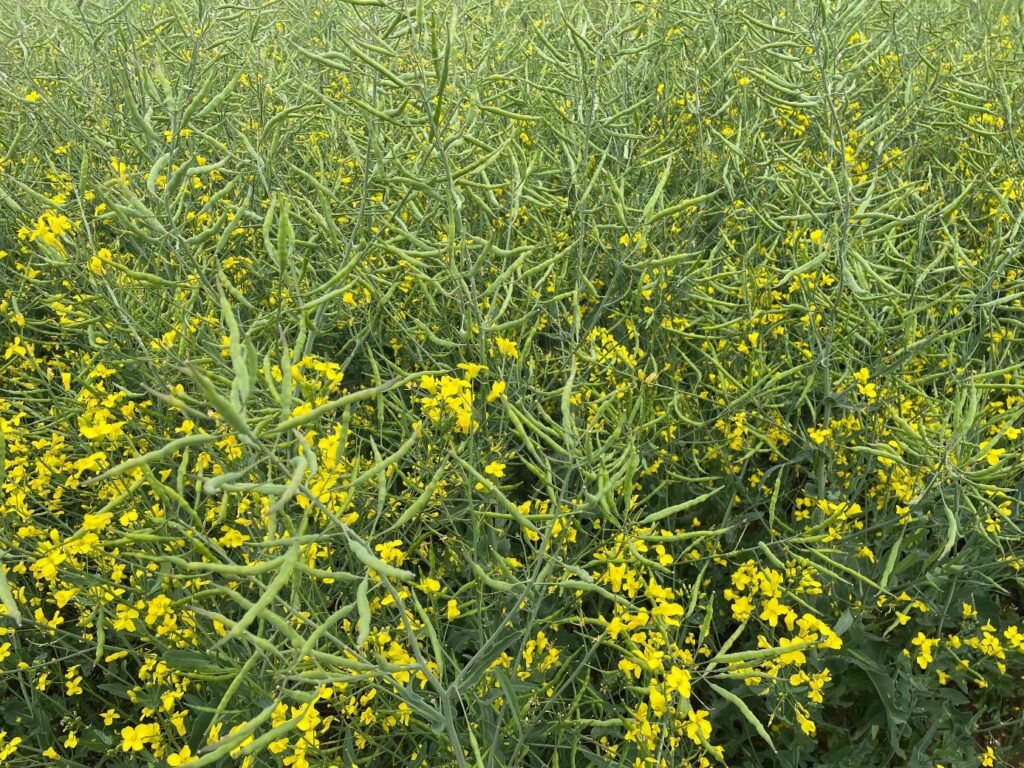
The 2023 and 2024 harvest years have strongly discouraged rapeseed growers. According to Statistics Estonia, the sown area for the current season decreased to 57,238 hectares (Figure 1). When looking at the Statistics Estonia data, it is striking that the sown area for the 2021 harvest is less than the harvested area. This indicates an inaccuracy in the statistics. However, by observing the vitality and nutrition of plants in challenging conditions, it is possible to manage more effectively.
In plant fertilisation, in addition to the soil condition, the plant’s ability to utilise nutrients based on its condition is important. This can be influenced by plant diseases, pests, drought, excess water, or winter damage. Damaged plants are not able to utilise nutrients to the same extent as healthy plants. Therefore, the yield potential of the plant stand decreases, and this must be taken into account during fertilisation. Additionally, during the period of intense nutrient uptake, the top layer of the soil is often dried out, which does not support nutrient availability. Unused nutrients cause the formation of late shoots with subsequent rains, which makes harvesting difficult and indicates a decrease in fertiliser efficiency (Photo 1).
Paul-Tech soil sensors show that if winter-damaged plants are fertilised in the same way as healthy ones, there will be enough nutrients for a second flowering. In the worst case, this situation makes harvesting impossible – a large portion of the fertiliser and the yield is lost. Winter rapeseed needs 60 kg of nitrogen to produce 1 tonne of yield. The average winter rapeseed yield in Estonia in 2024 remained at 1.563 t/ha. To produce such a yield, 94 kg/ha of nitrogen would have been sufficient. In addition, many ripened seeds were lost due to shattering and remaining in the raw mass passed through the combine harvester. Therefore, an expected yield of three tonnes or more was not economically viable. With less fertiliser, a larger and higher quality yield can be obtained than by running semi-raw mass through the combine harvester.
In addition to visual inspection, it is good to assess the vitality of plants using an NDVI map from the time winter recedes (Figures 2…5). The vitality map during the second fertilisation round (Figure 3), which allows assessing the plants’ ability to absorb nutrients in the future, provides a particularly good overview of recovery from winter damage. This allows yield expectations to be reassessed and fertilisation to be adjusted accordingly to avoid fertiliser waste and harvesting problems (Figure 5).
On a field with winter damage (on the right in the Figures!), three rounds of fertilisation were carried out in the spring, the last of which also fell on drought-dry soil: 1st round of nitrogen (N) 103, 2nd N 31, 3rd N 54 kg/ha +S. When assessing the plant stand, it would have been possible to reduce the nitrogen fertiliser in the first round, apply sulphur with the nitrogen in the second round, and skip the third round altogether.
By harvest time, the pods on the vigorous field in the spring had ripened evenly (field on the left in the Figure). On the winter-damaged field, on the other hand, the ripe pods of the first flowering were mixed with green ones, and yellow flowers also adorned the scene (Figure 5).
“Would have” and “should have” are no longer of any help to the 2024 harvest and management efficiency, but in the future, taking into account the condition of the plants and soil conditions when fertilising will provide the farmer with significant financial savings.


